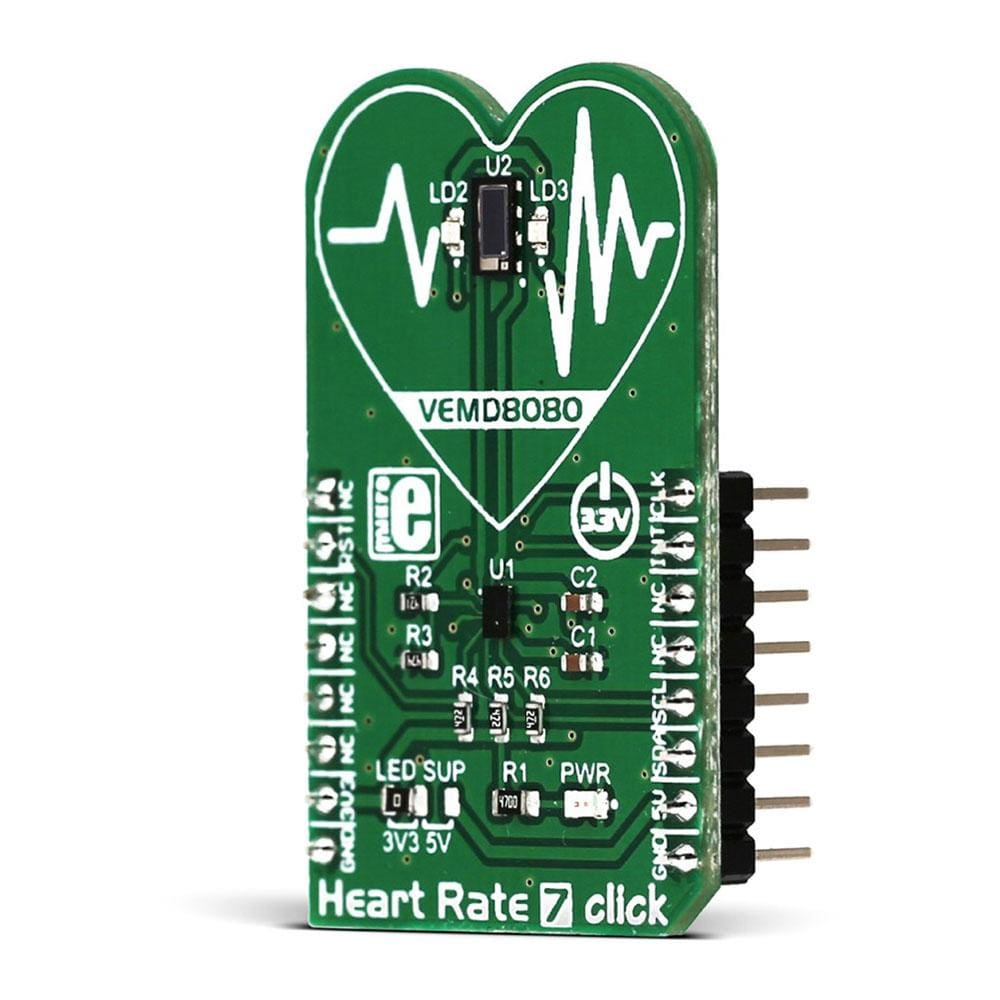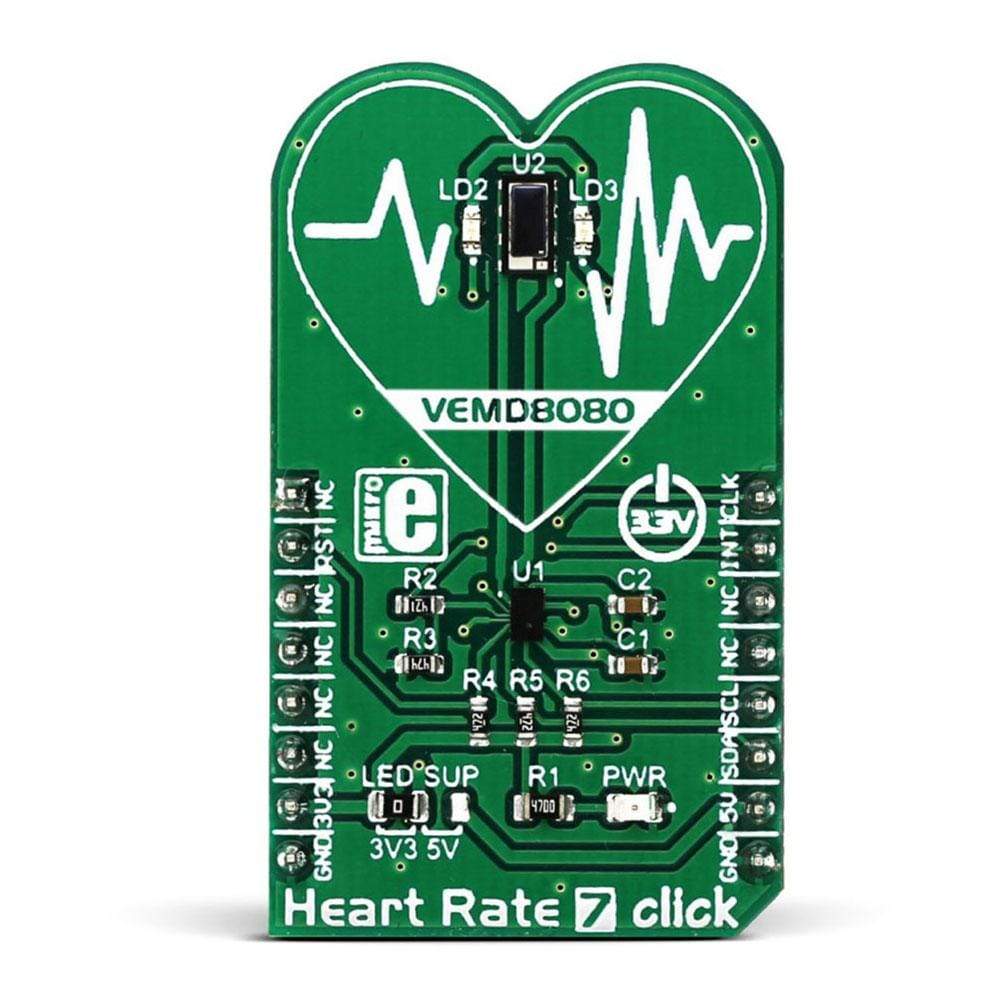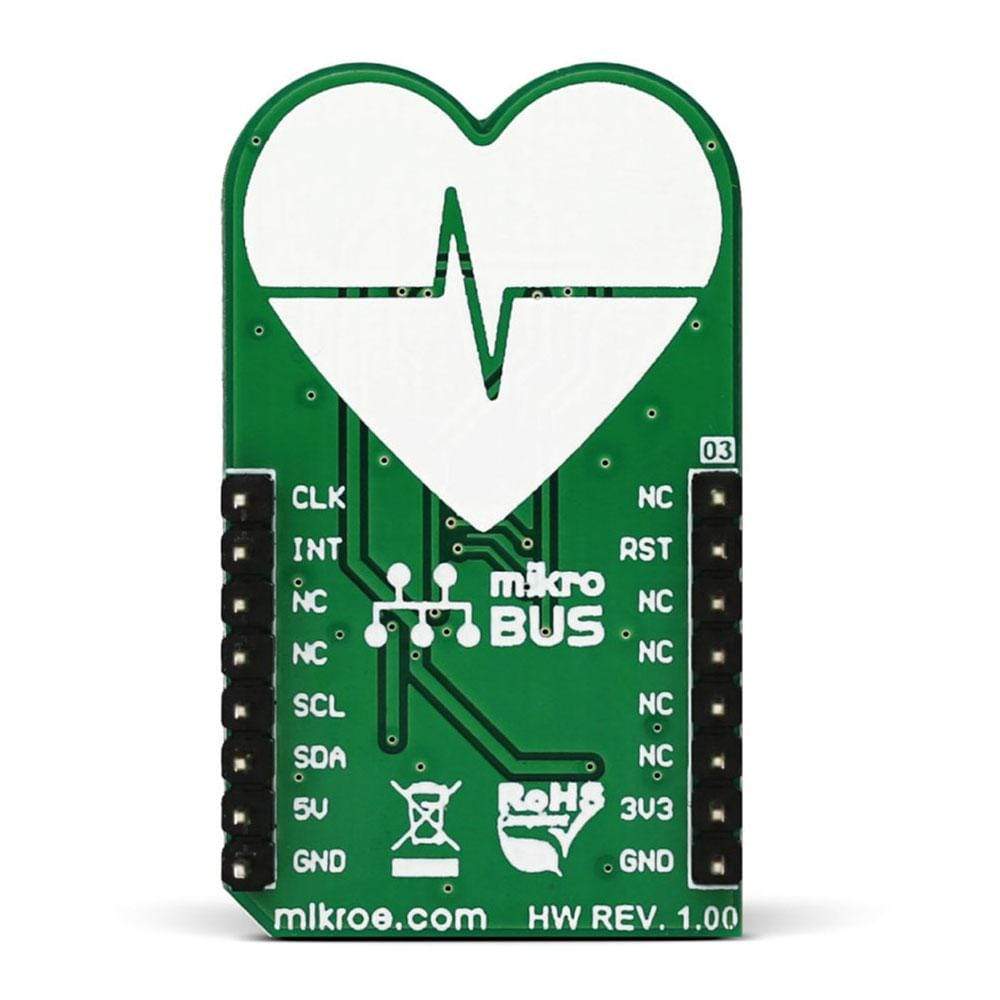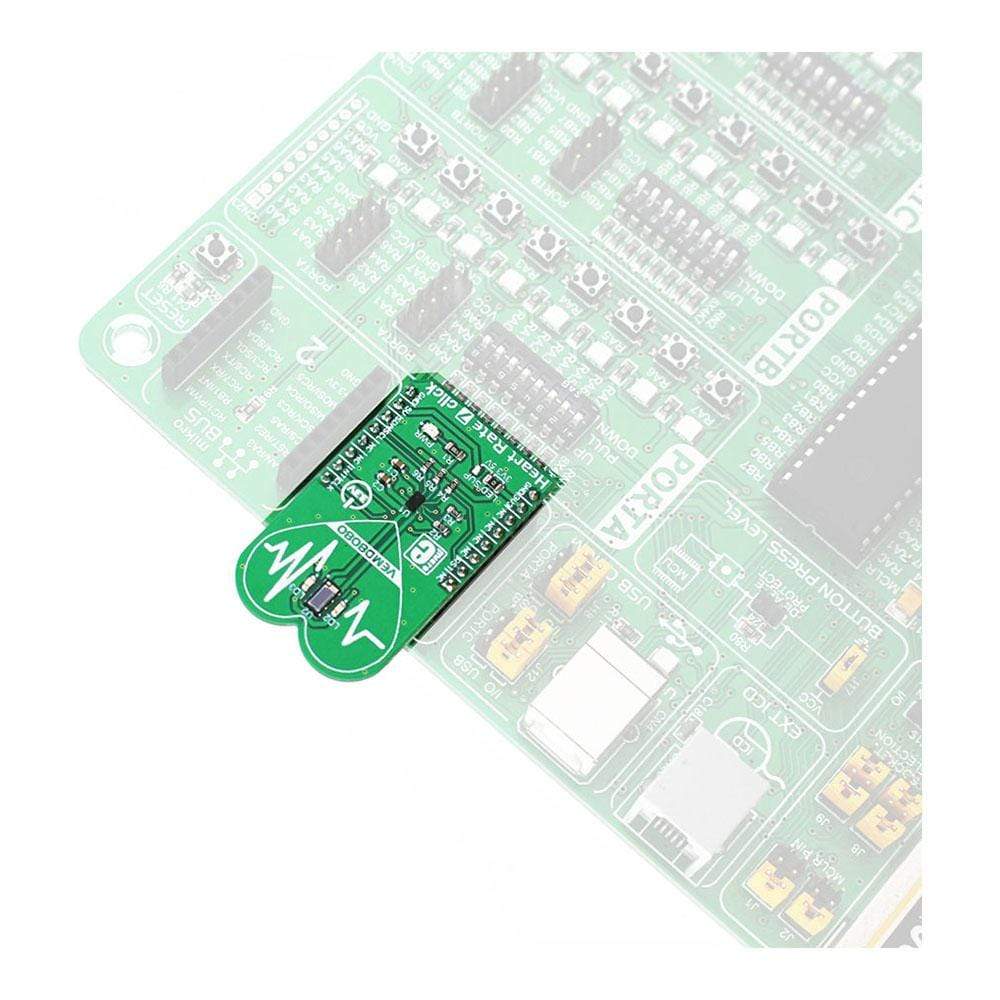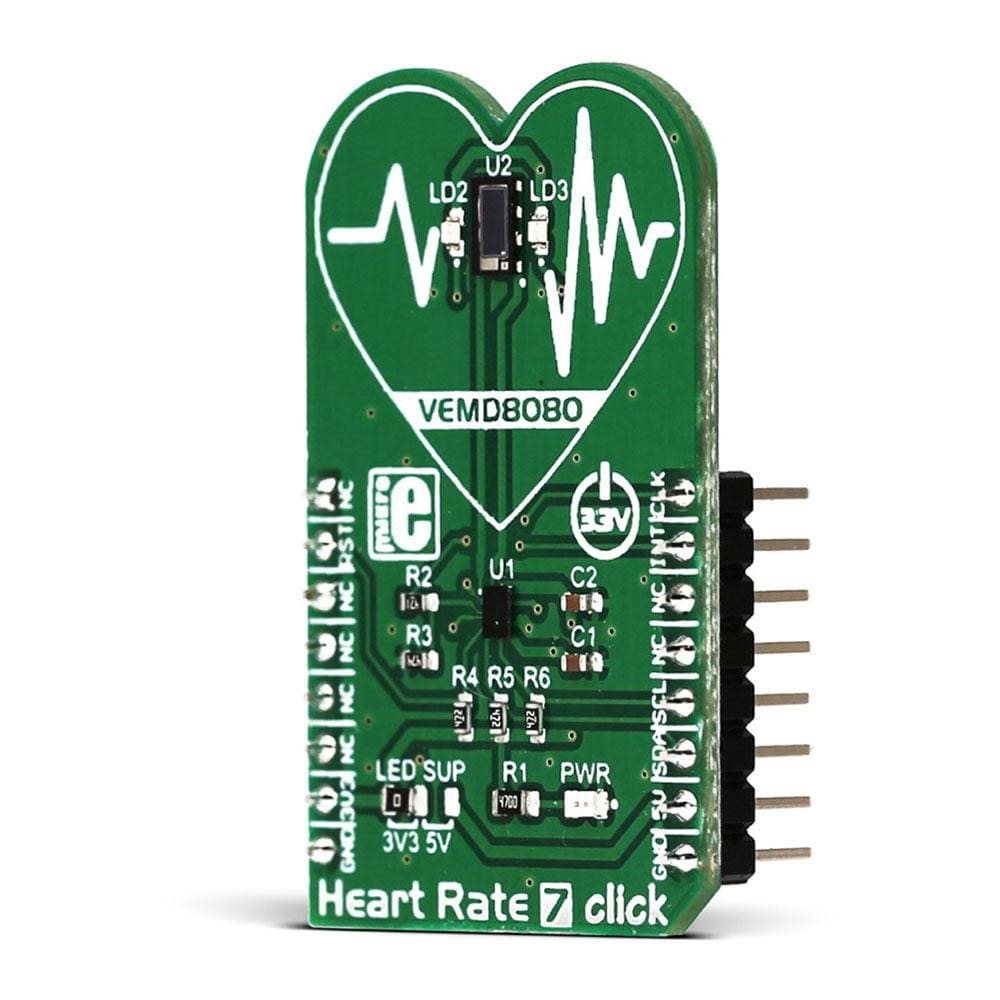
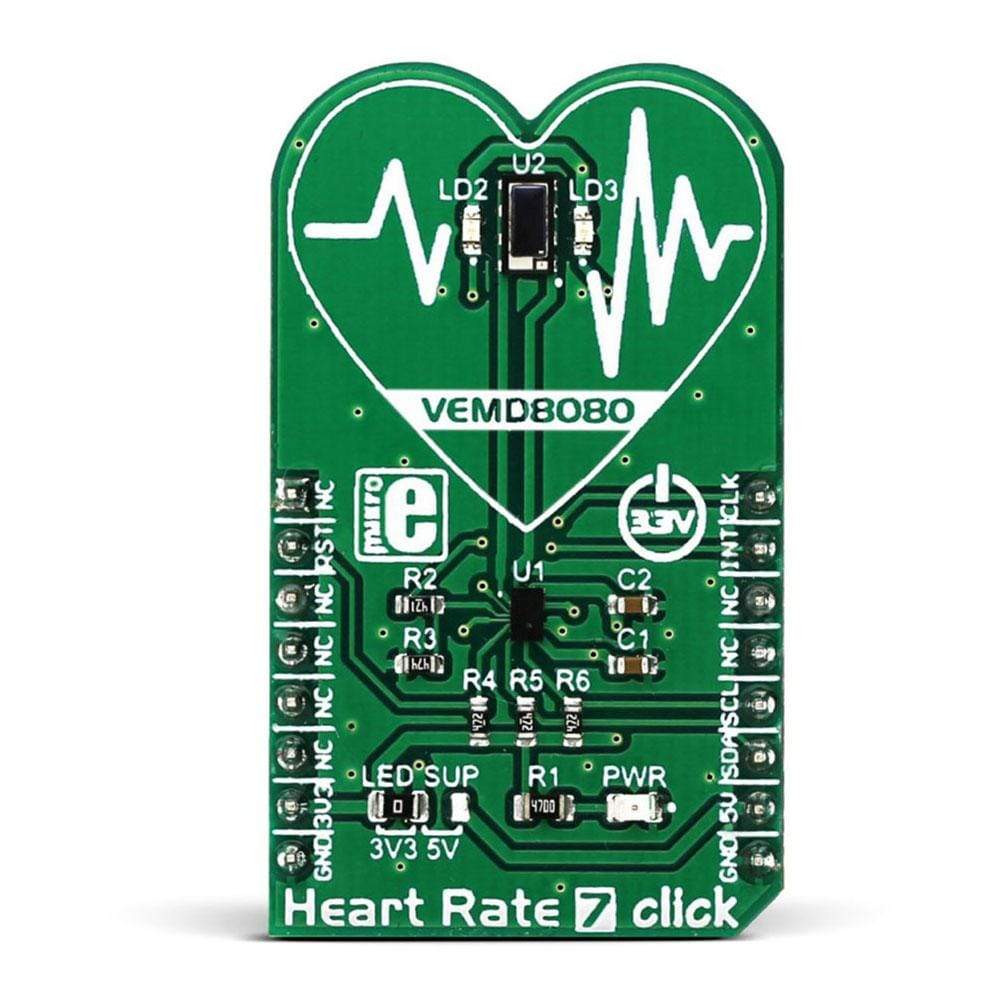
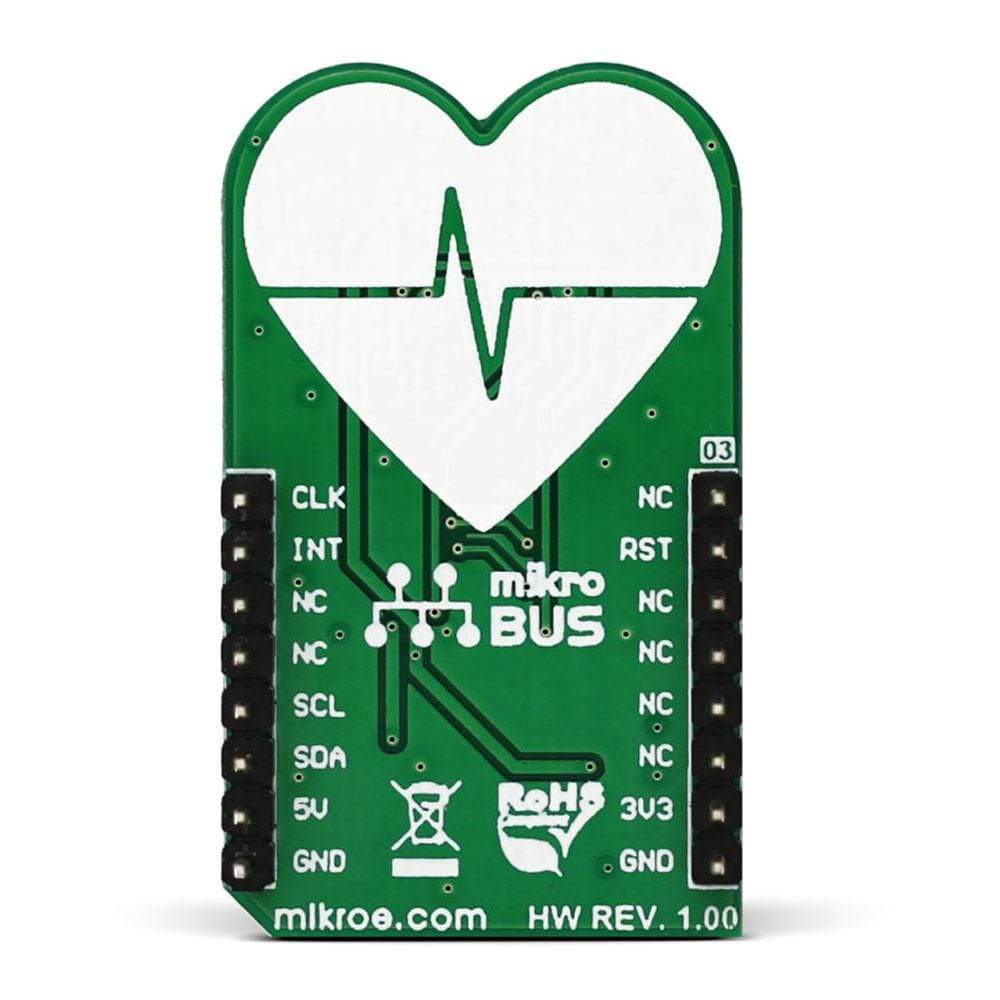
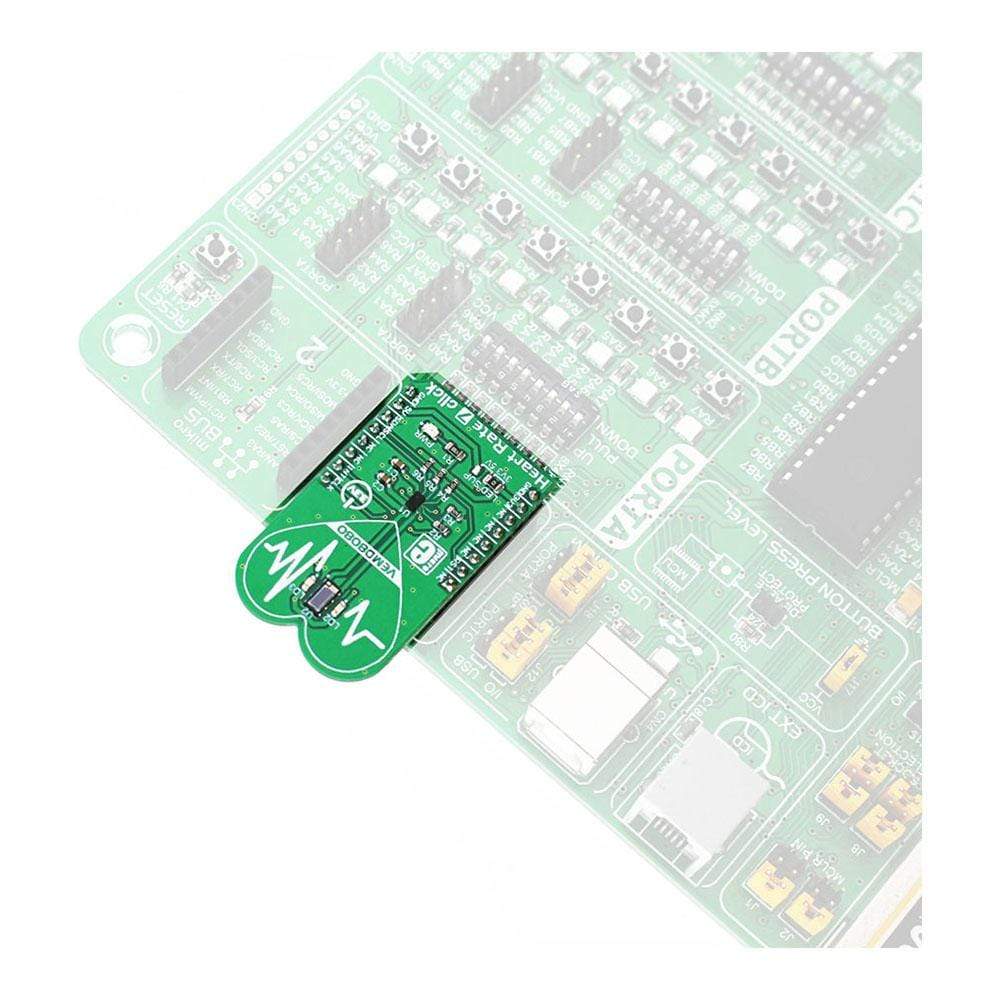
Overview
The Heart Rate 7 Click Board™ is an optical biosensor Click Board™ that can be used for heart-rate monitoring (HRM). This Click Board™ employs a very sensitive analogue front-end IC with a high dynamic range, which ensures accurate and reliable readings. This analogue front-end IC is coupled with the optical front end, which consists of a sensitive photo-diode (PD) and two high brightness green LEDs. The photo-diode is the most sensitive to a visible light spectrum, offering reasonably high current output compared to other, standard type PD elements used so far, thus providing very accurate HRM readings.
Downloads
Das Heart Rate 7 Click Board™ ist ein optisches Biosensor-Click Board™, das zur Herzfrequenzüberwachung (HRM) verwendet werden kann. Dieses Click Board™ verwendet einen sehr empfindlichen analogen Frontend-IC mit einem hohen Dynamikbereich, der genaue und zuverlässige Messwerte gewährleistet. Dieser analoge Frontend-IC ist mit dem optischen Frontend gekoppelt, das aus einer empfindlichen Fotodiode (PD) und zwei hellen grünen LEDs besteht. Die Fotodiode ist am empfindlichsten für ein sichtbares Lichtspektrum und bietet im Vergleich zu anderen bisher verwendeten PD-Elementen des Standardtyps eine relativ hohe Stromabgabe und ermöglicht so sehr genaue HRM-Messwerte.
| General Information | |
|---|---|
Part Number (SKU) |
MIKROE-2998
|
Manufacturer |
|
| Physical and Mechanical | |
Weight |
0.018 kg
|
| Other | |
Country of Origin |
|
HS Code Customs Tariff code
|
|
EAN |
8606018712908
|
Warranty |
|
Frequently Asked Questions
Have a Question?
Be the first to ask a question about this.

